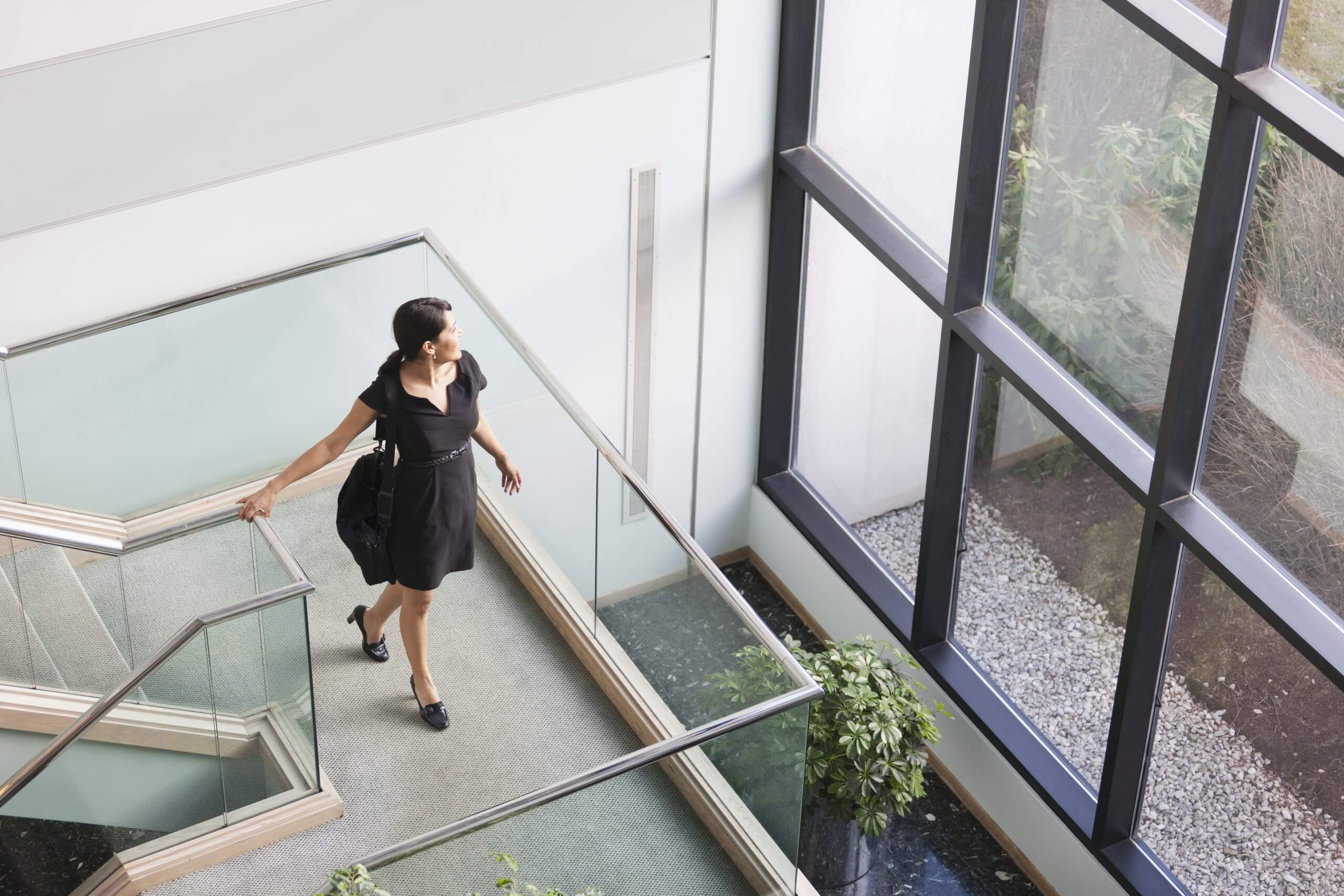Kids are always being told to go outside and get fresh air. Likewise, seemingly everyone is being told to increase the amount of fresh air ventilation in their indoor spaces these days. While there is an abundance of fresh air outdoors, fresh air should also be present indoors. Improved ventilation is, after all, a key infection control mitigation strategy. Unfortunately, most people are unaware of the many benefits of improved indoor ventilation, the value of fresh air and its impact on indoor air quality. Introducing fresh air indoors should be a priority for everyone and every indoor space.
Why It’s Essential To Have Fresh Air Indoors
As aforementioned, having fresh air indoors is important for all. This includes homeowners, business owners, school faculty, students, office managers and so on. Here are four reasons, among many, that support this claim.
- Did you know that fresh air increases happiness? Oxygen directly influences the release of serotonin. Serotonin is the neurotransmitter responsible for mood and feelings of well-being and happiness. When we lack oxygen, our brains release less serotonin. Conversely, when we have a sufficient amount of oxygen in our blood, our brains release more serotonin.
- Fresh air also has a significant impact on brain function. When the brain receives a sufficient amount of oxygen, brain function increases by 20%. Fresh air allows for better concentration and productivity, and couldn’t we all afford to sharpen our focus?
- Fresh air greatly reduces the concentraiton of indoor air pollutants. The science behind this fact is simple. The introduction of fresh air forces stale air out, carrying with it a variety of air pollutants. Thus, reducing the concentration of indoor air pollutants.
- A particularly important (and relevant) fresh air benefit is reduced indoor transmission. Ventilation minimzes the spread of germs, bacteria and viruses, including airborne diseases like COVID-19. That sounds too good to be true doesn’t it? Well, let’s take a look at the research.
Does Ventilation Help Reduce the Spread of COVID-19?
Breathing, speaking, coughing and sneezing are all methods of airborne transmission for COVID-19. When these basic actions occur, t releases particles (also known as droplets and aerosols) into the surrounding air. These particles can then be inhaled by those nearby. If the aerosols contain COVID-19, then everyone in the nearby breathing space is subject to potential infection. Creating a consistent flow of fresh air indoors can help lower the concentration of viral particles. This means that higher ventilation rates and fresh air dilution make it less likely to breathe in virus particles in an indoor space.
 Healthy School Buildings: Improving ventilation was a top priority for schools across the country in response to the coronavirus pandemic. Read how schools prioritized IAQ solutions, like fresh air ventilation, as part of their COVID response plans. Learn more →
Healthy School Buildings: Improving ventilation was a top priority for schools across the country in response to the coronavirus pandemic. Read how schools prioritized IAQ solutions, like fresh air ventilation, as part of their COVID response plans. Learn more →The concentration of viral particles is often higher indoors. Why? First of all, wind and air movement outdoors easily lessens viral particle concentrations. And, well, there are no gusts of wind indoors. Second, indoor spaces are frequently poorly ventilated which contributes to the higher pollutant concentration levels. Thus, COVID-19 can more readily transmit indoors. Pair this with the fact that COVID-19 can remain in the air even after an infected person or group has left and you have a strong argument about the importance of fresh air indoors.
Ventilation is a key measure & should be used in combination with other public health & social measures to prevent the spread of #COVID19.
— World Health Organization Philippines (@WHOPhilippines) January 21, 2022
It means bringing fresh, outside air indoors, and letting inside air out.
Here are some tips to ensure good ventilation wherever you are 👇 pic.twitter.com/0l4tz3Bi8q
How To Increase Fresh Air Indoors
Don’t Be Afraid To Open Windows and Doors
Allow for cross-ventilation by opening windows and doors on opposite sides of a residential or commercial building. Opening multiple windows or doors on different floors is beneficial as well. If the residential or commercial space has double-hung windows, open the top sash of one window and the bottom sash of the other. When increasing natural ventilation, be sure to keep internal doors open. However, if opening windows or doors pose a health or safety risk, such as because of freezing temperatures outdoors, it is best to find another method of ventilation.
Invest in a Fan (They’re More Helpful Than You Think)
Fans are advantageous when attempting to bring fresh air into an indoor space. Fan placement will vary depending upon the room’s layout. It is important to avoid placing the fan in a position that will allow contaminated air to flow from one person to another. If using one fan, it should face the same direction that air is naturally flowing. Or, if using multiple fans, one should push air outward while the other draws air inward. If you’re having trouble determining the direction of the wind, look at the drapes or other nearby lightweight objects. On a particularly windy day, you may need to move the fan(s) to another location. Or, you may not need a fan at all.
Utilize Mechanical Ventilation
There are two types of mechanical ventilation systems, energy recovery ventilators (ERVs) and heat recovery ventilators (HRVs). The purpose of both systems is to provide fresh outdoor air while removing stale indoor air. During this process, a heat recovery component retains energy from the outgoing airstream and transfers it to the incoming airstream making these systems energy-efficient and cost-effective.
Mechanical ventilation solutions are whole-home or whole-building system upgrades that drastically improve indoor ventilation. These fresh air systems help increase the indoor-outdoor air exchange, making them the ideal ventilation solution.
Turn On Exhaust Fans
And we mean, any and all exhaust fans. Running exhaust fans serves as a helpful indoor infection control method. Exhaust fans are typically found in restrooms and kitchens. They remove humidity, odors and contaminants by venting the air outside. Also known as spot ventilation, exhaust fans are simply localized mechanical ventilation systems. If your residential or commercial building has one or more exhaust fans, we recommend turning all of them on (given they are functioning properly).
Make Fresh Air Indoors a Priority
Fresh air indoors benefits everyone in a variety of ways, and not simply by helping ward off bacteria and viruses. However, this is particularly beneficial as the COVID-19 pandemic continues. Remember that ventilation should be used in addition to other infection control precautions, such as social distancing.
Countless aerosol scientists, building and indoor environmental experts, as well as IAQ professionals, continue to emphasize ventilation’s importance. While the current focus on increasing fresh air indoors may seem like a trend or a temporary fix, fresh air benefits are in reality long-term benefits. Fresh air should be the priority for every indoor environment this year. Stay safe and ventilate.



